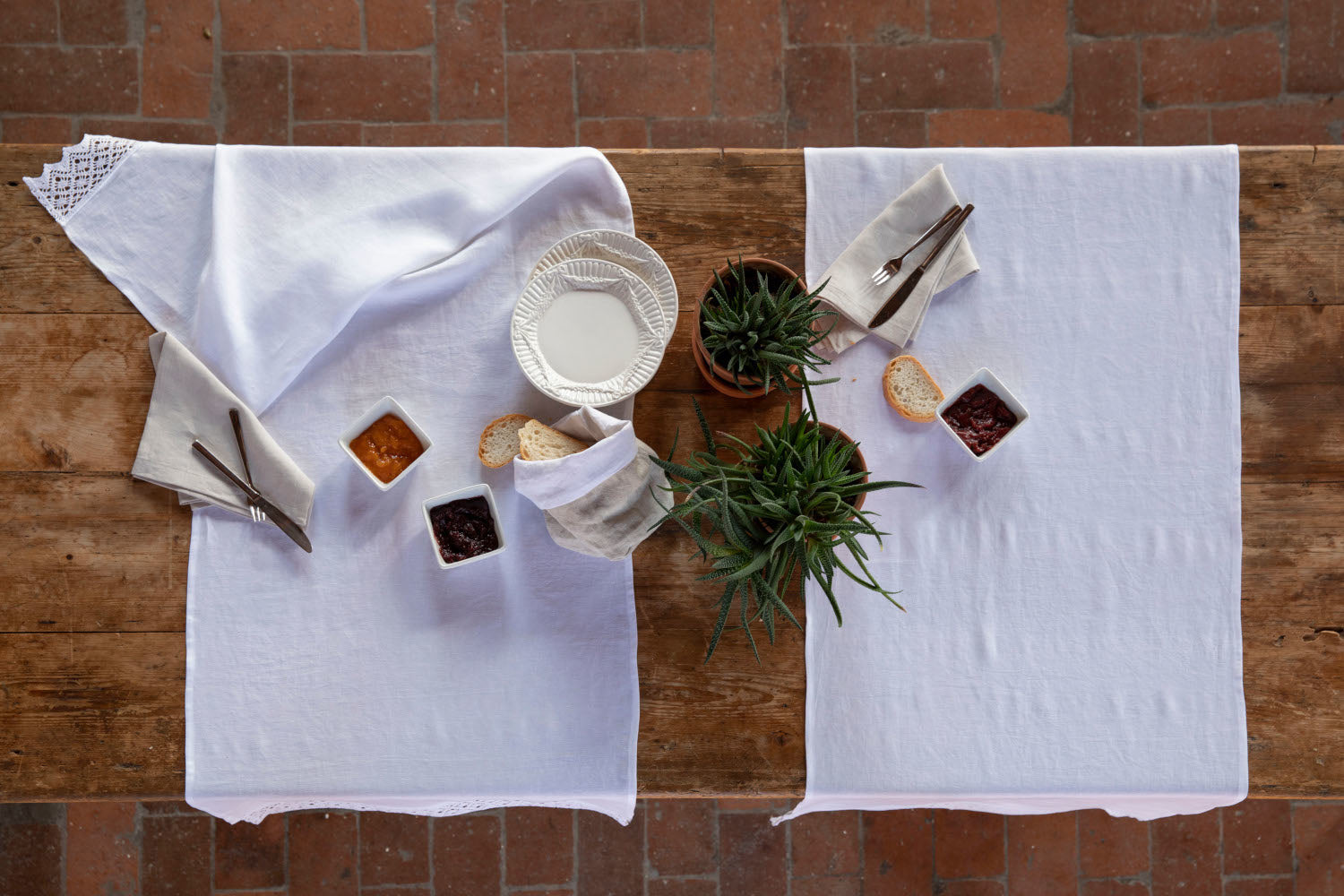The maintenance label, which by law has to be attached to every textile item we buy, explains how to wash, iron and dry it, to clean it and preserve it over time in the best possible way.
Let's take a look together at the care labels found on our Nora V products
Washing
For bed linen and towels, it is generally sufficient to wash them at 40 degrees temperature with a slower spin-cycle (to avoid forming too many creases).
Why only 40 degrees? The detergents currently on the market work well even at lower temperatures. Is also good for the environment.
We advise you not to over-load your washing machine too, because the more room the laundry has to spin, the less the fibers get damaged by rubbing together, also forming less creases.
By adding common white-wine vinegar to the wash (1 cup per load), you get extra clean and softer laundry.
Why vinegar? The advantages are many: it increases the cleaning power of the detergent, fixes the colors – so less fading too! - and softens fabrics in a natural way.
Using vinegar will also allow you to eliminate detergent residues on textiles with each wash, avoiding irritation for those with more sensitive skin.
The same washing rules above apply to table linens.
Food or stubborn stains can be pre-treated by pouring a solution of water and vinegar directly on the stain and then washing the item as usual, or using an anti-stain product that you can find in stores.
Drying
How to best dry your laundry?
Whether you hang it on a line or use the dryer, our general advice is to remove laundry before is fully dried: in particular, leaving it in the hot sun for too long, in addition to stiffening the cloth and fixing any creases could compromise the colors by fading them.
A dryer is a great ally for laundry, and bathroom textiles come out soft and fluffy -as good or even better than when you bought them.
When dried properly, your bed and table linen don't even need ironing!
How to best use the dryer?
We always advise you to set it on a low temperature; like that the cycle lengthens, but the result are excellent: the laundry does not shrink excessively, the fibers are not damaged (so all your items last longer) and creases get smoothed out .
By inserting dryer balls or just regular tennis balls, fabrics are softened, and the drying cycle is greatly helped.
To iron or not to iron?
In our busy lives ironing is definitely something we all like to avoid doing, but with a few clever tricks we can cut our ironing down to nothing - or almost nothing!
So, try:
- Putting vinegar in the wash makes your laundry softer and less creased.
-If air-drying hangs the laundry well, lying flat if very delicate and using pegs only along the seams or on concealed areas, as they can leave marks.
- Pick up your laundry when is almost dry, without waiting for it to unnecessarily harden in the sun and form creases that are difficult to iron.
- Once the laundry has been collected, fold it immediately, smoothing it out with your hands; do not leave laundry piled up without folding it first
- In the dryer, use dryer or tennis balls to smooth out fabrics.
- Do not dry at high temperatures – to avoid shrinking garments -and remove the laundry immediately after the cycle is complete.
-Smooth out and fold laundry as soon as has dried.
When ironing cannot be avoided, remember that is not always necessary to do it at a very high temperature: try first on a corner, then set the optimum temperature.
Also remember that hot temperatures when ironing can weaken and damage fabrics.

